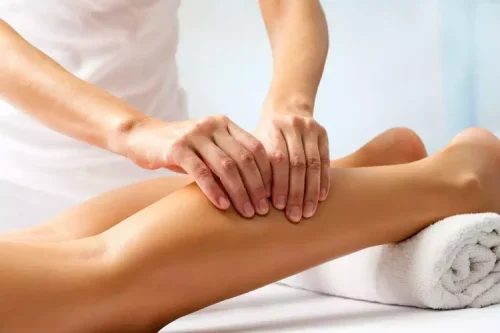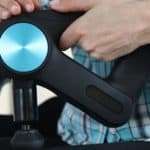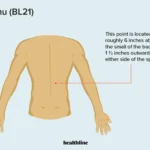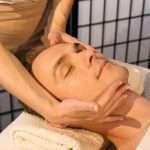Tired, tight legs after a long day? Whether you’ve been standing for hours, running errands, or just want to unwind, learning how to give yourself a proper leg massage can make all the difference. With just five simple steps, you can ease muscle soreness, boost blood flow, and enjoy a spa-like experience right at home—no fancy tools required. In this quick guide, we’ll show you exactly how to do a relaxing, therapeutic leg massage that supports recovery and relaxation. Let’s get into it!
Table of Contents
Benefits of Leg Massage
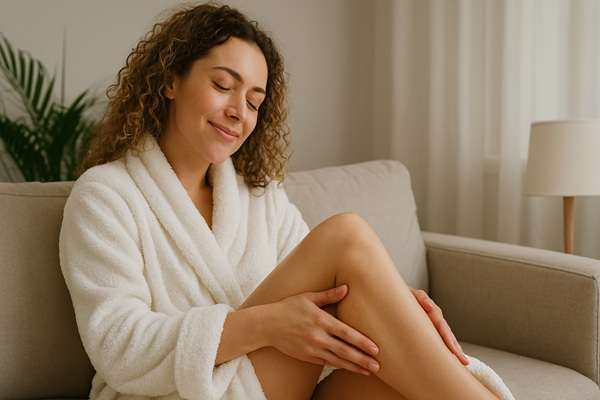
- Relieves Muscle Tension – Leg massage helps to relax the muscles and relieve stress, which can reduce soreness, stiffness, and fatigue.
- Improves Blood Circulation – Leg massage helps increase blood circulation to the legs, which can improve overall energy levels, reduce swelling, and reduce the risk of developing varicose veins.
- Improves Mobility – Leg massage can help improve the range of motion of the legs, which can make daily activities easier and help with overall mobility.
- Reduces Stress – Leg massage can help reduce stress and anxiety, which can help improve overall mental health.
Leg massage is a great way to relax and alleviate tension, improve circulation, and reduce stress. With a few simple steps, you can give yourself a leg massage in the comfort of your own home.
Preparation Tips for Self-Massage

| Preparation Tips | How To Massage A Leg |
|---|---|
| Choose a comfortable place | Choose a comfortable, quiet place with enough space to move around freely. |
| Gather your supplies | Gather a massage oil or lotion, a massage table or chair, and a few towels. |
| Warm up the area | Warm up the area with a heating pad or hot water bottle to relax the muscles. |
| Choose your music | Choose some soothing music to help you relax and focus on the massage. |
| Remove jewelry | Remove any jewelry that could interfere with the massage. |
| Undress | Undress as much as you feel comfortable with, and cover up with a sheet or towel. |
| Relax | Relax your mind and body before beginning the massage. |
Once you have prepared the area, you are ready to start your self-massage.
Step-by-Step Guide to Leg Massage

Massage the Front of the Legs
Start at the top of the thigh and apply pressure with your fingers in a circular motion. Move down to the knee, circling around it and up the back of the thigh. Keep the pressure light and even, working your way back up the thigh and repeating the motion.
Massage the Back of the Legs
Using your fingers, start at the top of the thigh and massage in circular motions. Work your way down to the knee, using the same circular motion. Make sure to keep the pressure even and light.
Massage the Upper Thighs
Using your thumbs, massage the inner and outer thighs. Use a circular motion, starting at the top and working your way down. Make sure to keep the pressure light and even.
Massage the Lower Thighs
Starting at the knee, use your fingers to massage in circular motions. Move up the thigh, applying pressure with your fingers. Keep the pressure light and even.
Massage the Calves
To massage sore thighs, start at the ankle and use your thumbs to massage in circular motions. Work your way up the calf, applying pressure with your thumbs. Keep the pressure light and even.
Tips for Massaging Specific Leg Areas
Massaging Sore Muscles
Gently kneading the muscles of your thighs can help reduce stiffness and tension. Start by lightly cupping your hands around your thigh, then move them in small, circular motions, applying light pressure as you go. This can help to warm up the area and encourage the muscles to relax.
Massaging Leg Pain
If you have any leg pain, focus on the area that is causing the most discomfort. Rub the area in a circular motion, then press down and hold for a few seconds before releasing. This can help to break up any tension in the area and potentially provide relief. If the pain persists, it is important to visit a physician for further assessment and treatment.
How to Massage Your Thighs Yourself
To massage your thighs yourself, start by applying some massage oil or lotion to the area. This will help to reduce friction and facilitate a smoother massage. Use your thumbs to press into the muscles, applying light pressure in a circular or up-and-down motion. Move slowly and steadily around the area, focusing on any areas that feel particularly tense. When you’re finished, use a warm towel to wipe off any excess oil.
How often should you give yourself a leg massage?

- For general purposes, aim for a leg massage 1-2 times a week.
- If you experience tightness, soreness, or spasms, increase the frequency.
- If you are an athlete, get a leg massage at least 3 times a week.
- If you have an injury, consult a health care professional for an individualized plan.
Leg massage is a great way to relax, reduce stress, and help with muscle recovery. By including regular leg massage into your self-care routine, you can improve your overall well-being. So, make sure to give yourself a leg massage to reap the numerous benefits of self-massage.
Post-Massage Care Tips: Maximize the Benefits of Your Leg Massage
To get the most out of your self-massage, what you do after the session matters just as much as the massage itself. Here are a few smart ways to support recovery, reduce soreness, and keep your legs feeling their best:
💧 1. Hydrate
Drink plenty of water post-massage to help flush out metabolic waste and toxins that may have been released from the muscles. Hydration supports healthy circulation and muscle recovery.
😴 2. Rest
Give your body time to absorb the full benefits of the massage. Even 15–30 minutes of rest can help the nervous system recalibrate and promote a deeper state of relaxation.
🧘 3. Gentle Stretching
After the massage, do light stretches for your quads, hamstrings, and calves. Stretching helps reinforce the new muscle patterns created during massage and can extend the sense of relief.
🚶 4. Stay Lightly Active
Gentle activity like walking or light yoga can help maintain blood flow and support continued toxin elimination. Avoid intense workouts right after your massage session.
❄️ 5. Use Ice or Heat
Depending on how your legs feel post-massage, you might apply:
- Heat to relax tight muscles and improve circulation
- Ice to reduce inflammation or calm sore areas
Listen to your body and choose what feels best.
🔄 6. Practice Regular Self-Massage
Keep the benefits going by incorporating leg massage into your weekly wellness routine. Tools like foam rollers, massage balls, or even your hands can help maintain muscle health between sessions.
Frequently Asked Questions
Is Giving Yourself a Leg Massage Beneficial?
Yes! Giving yourself a leg massage is a wonderful way to relax and relieve tension in the muscles, improve circulation, and help to reduce pain and swelling. Here are some of the benefits:
- Reduces muscle tension and stress.
- Improves circulation.
- Relieves pain and swelling.
- Improves flexibility and range of motion.
- Promotes relaxation.
Massaging your legs can also help to reduce fatigue, improve posture, and improve your overall health. Massages can help to reduce lactic acid build-up in the muscles, which can lead to improved performance and reduce the risk of injury.
Are there any precautions I should take before giving myself a leg massage?
Yes, here are the most important precautions you should take before giving yourself a leg massage:
- Do a skin test. Before giving yourself a leg massage, test a small area of your skin, like your inner arm, to make sure you do not have any adverse reactions to the massage oil or cream.
- Check for any underlying medical issues. Before giving yourself a leg massage, check with your doctor to make sure you do not have any underlying medical issues that could be affected by a massage.
- Warm up your leg muscles. Before giving yourself a leg massage, it is important to warm up your leg muscles by doing some light stretching and/or a short walk.
- Do not overdo it. When giving yourself a leg massage, it is important to be gentle and to not overdo it. Too much pressure can cause damage to your muscles and skin.
- Relax. The last, and possibly most important, precaution to take before giving yourself a leg massage is to relax. Taking a few deep breaths before starting can help you get into the right mindset.
Following these precautions can help ensure that you give yourself the perfect leg massage.
What Type of Massage Technique Should I Use for My Legs?
For the perfect leg massage, there are several massage techniques that can be used, such as kneading, stroking, and rubbing. Kneading involves pressing, squeezing, and lifting the muscles, while stroking is a gentler massage technique that involves long, gentle movements. Rubbing involves circular movements and is great for relieving muscle tension. Experiment with different techniques to find the one that works best for you.
Are there any specific areas I should focus on during the massage?
Yes! When giving yourself a leg massage, there are several key areas you should focus on:
- Calves: Massage your calves in a circular motion, working your way up and down.
- Hamstrings: Massage your hamstrings from the knee towards the hip in a kneading motion.
- Quadriceps: Use your thumbs to massage your quadriceps in a circular motion.
- Feet: Massage the soles of your feet and toes with your thumbs, paying extra attention to the arch of your foot.
Remember to apply the right amount of pressure and to be gentle, as the area can be sensitive.
How Often Should I Give Myself a Leg Massage?
The frequency of leg massages depends on the individual. Generally, it is recommended to give yourself a leg massage every few days or once a week. If you have a specific muscular issue, such as a sore area, you should massage it more frequently to help reduce pain and inflammation. Additionally, if you are an active individual and have tight muscles, regular massages can help reduce tension.
Final Thoughts: Make Leg Massage Part of Your Wellness Routine
Giving yourself a leg massage doesn’t have to be complicated. By following these five simple steps, you can reduce muscle tension, improve circulation, and bring a sense of calm to your day—all from the comfort of home. With consistent practice, this quick self-care ritual can become a powerful tool for boosting energy, supporting recovery after workouts, or simply winding down after long hours on your feet.
Want to enhance your massage routine? Check out our guide to the best at-home massage tools for legs—from hands-on techniques to budget-friendly devices that can take your results to the next level.
📖Explore More
👉 How to Massage Feet and Legs for Ultimate Comfort and Relaxation
👉Best Leg Massager for Circulation: Review & Buying Guide
👉How to Relieve Swelling and Pain in Your Feet and Legs with Massage
📚References
🔗The Benefits of Massage Therapy
⚠️ Disclaimer:
This article is for informational purposes only and does not constitute medical advice. Always consult with a licensed healthcare provider or certified massage therapist before beginning any new treatment, especially if you have pre-existing health conditions or concerns.

